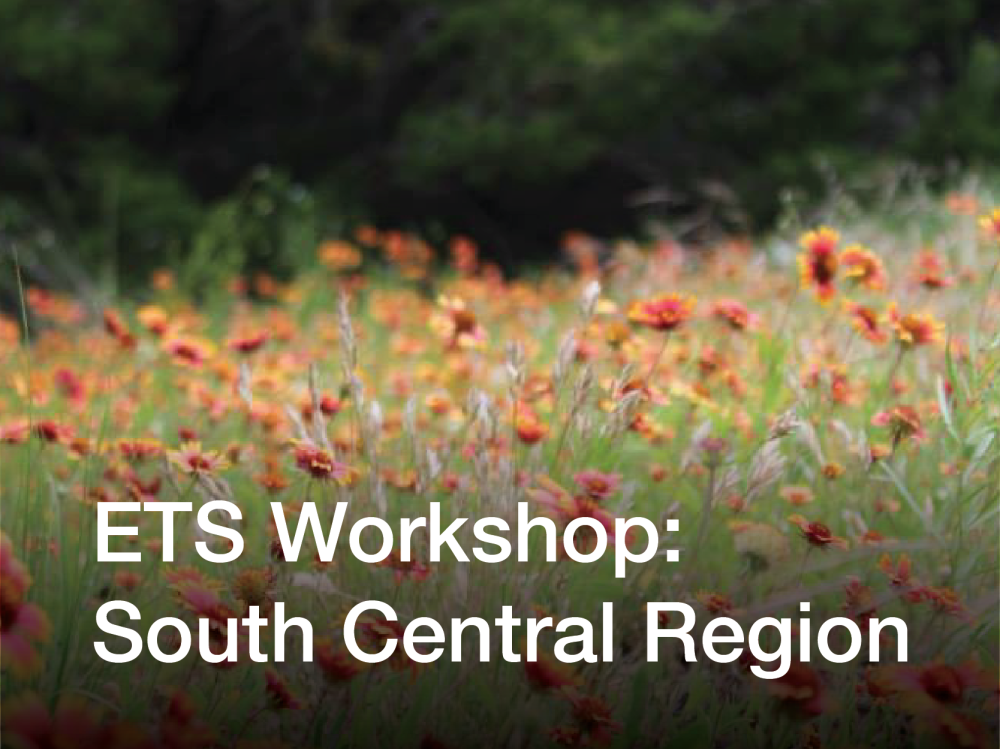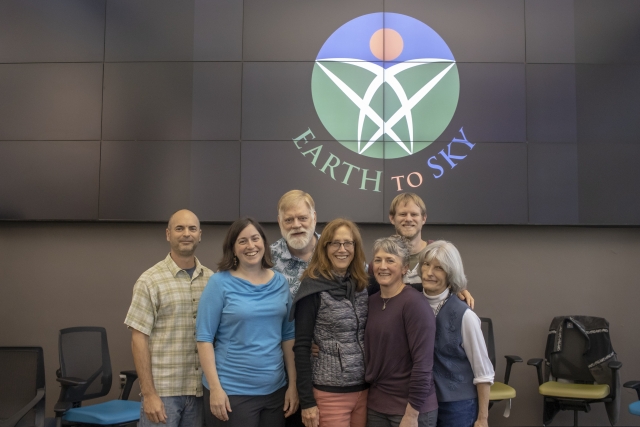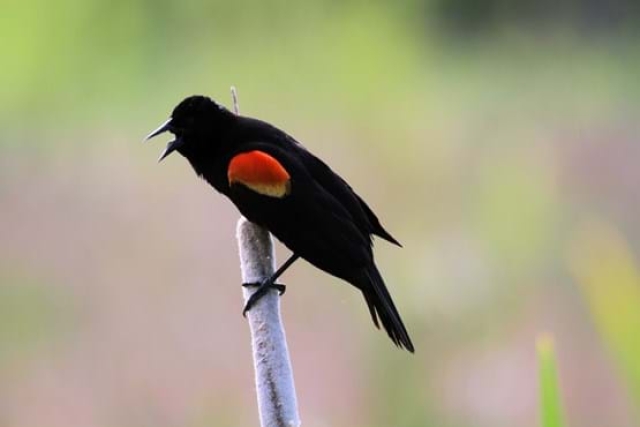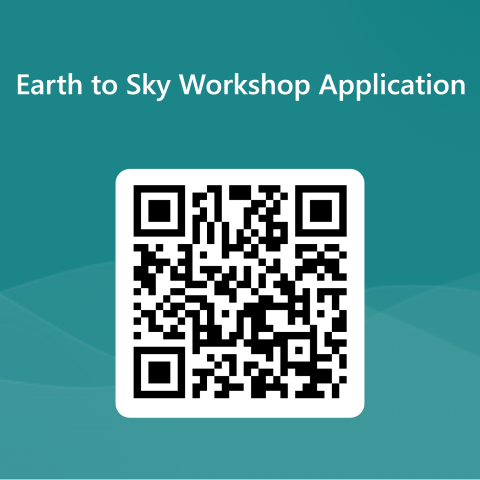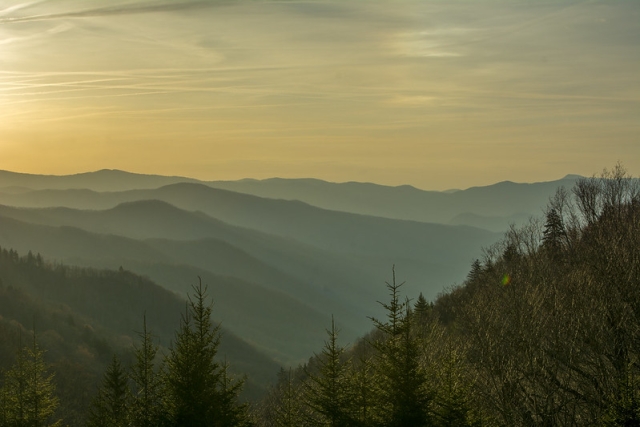- Details
Common Ground for Climate Communication: Building Resilience in the Pacific Northwest
Earth to Sky is coming to Eatonville, WA on March 12-14th, 2025!
This free, in-person, workshop where participants will explore how the Pacific Northwest is fertile ground for world-class climate interpretation and communication.
This course is hosted by Earth to Sky, funded by NASA, and offered in partnership with the National Park Service, the U.S. Fish and Wildlife Service, the Washington State Climate Office and the University of Washington.
About the Course
The dynamic natural and cultural landscape of the Pacific Northwest provides a rich backdrop for
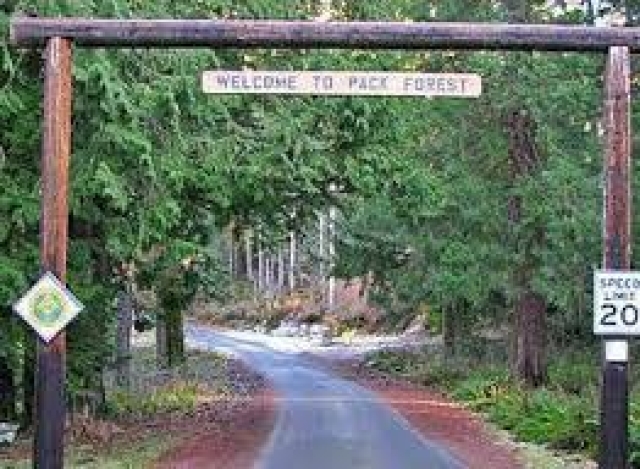 place-based interpreters to foster awareness, inspire hope, empower resilience, and communicate timely solutions to address climate change. This course seeks to nourish a community of practice that enhances the region’s capacity to access and share NASA climate science with its visitors. Participants will leave this course equipped with knowledge about cutting-edge climate science and a plan for bringing the climate story to their visitors in engaging and inspiring ways.
place-based interpreters to foster awareness, inspire hope, empower resilience, and communicate timely solutions to address climate change. This course seeks to nourish a community of practice that enhances the region’s capacity to access and share NASA climate science with its visitors. Participants will leave this course equipped with knowledge about cutting-edge climate science and a plan for bringing the climate story to their visitors in engaging and inspiring ways.
- Join interactive sessions with experts on topics from the natural and social sciences.
- Connect with colleagues at the beautiful Pack Forest site.
- Get on the front lines with a field trip to a local site.
- Travel and lodging support are available.

Target Audience
Interpretive managers, interpreters, tour operators, informal educators, and science communicators at federal, state or municipal agencies, non-profit and private organizations. Knowledge of climate science is not required.
For more information, check back here, join our mailing list by emailing This email address is being protected from spambots. You need JavaScript enabled to view it. or contact This email address is being protected from spambots. You need JavaScript enabled to view it..
- Details
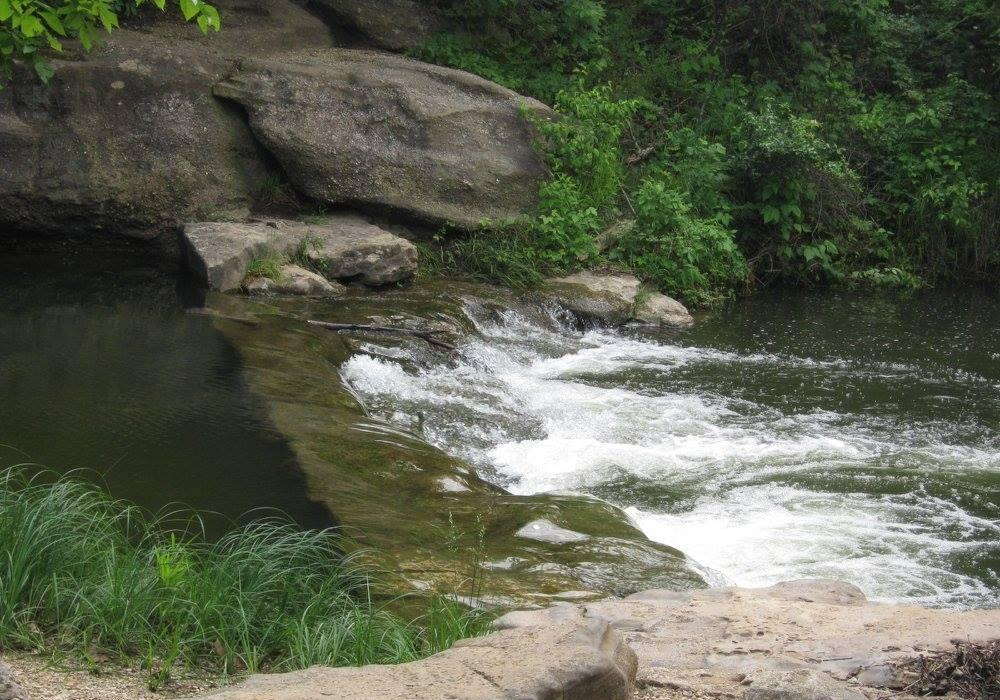 This course will include a field trip to Chickasaw National Recreation Area. (NPS Photo)
This course will include a field trip to Chickasaw National Recreation Area. (NPS Photo)
Join us for three days of training with native informal educators from across the South Central Region who recognize the importance of teaching climate change. Participants are encouraged to apply as teams of 3–5 collaborators (e.g. Tribal environment and education staff). You will work with these teams to develop plans to implement an youth outreach activity in your tribal community!
|
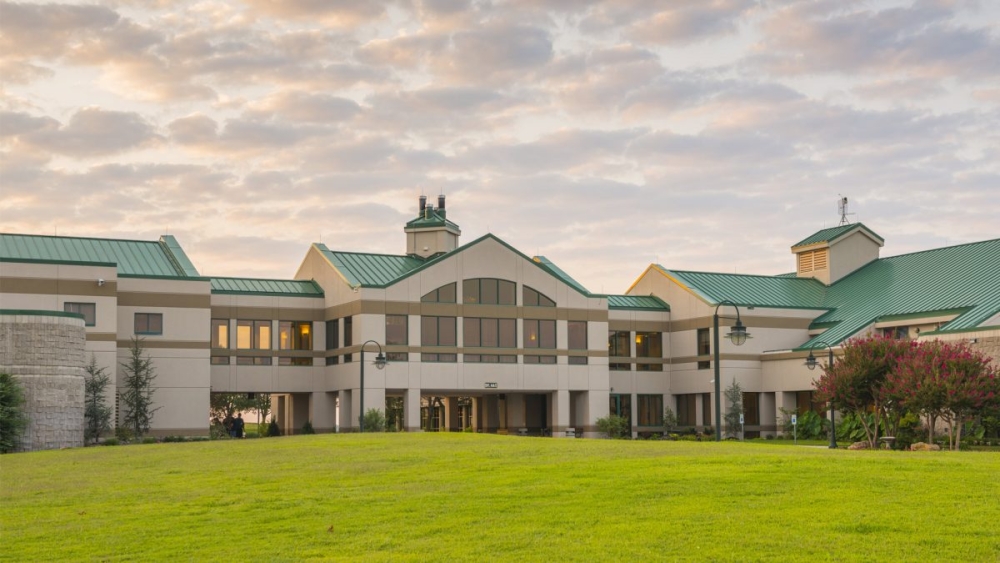 Chickasaw Retreat and Conference Center
Chickasaw Retreat and Conference Center
- NASA Arctic & Earth Signs Training
- NASA Living Landscape Project
- Shar-A-Thon of Youth Activities
- Field Trip to Chickasaw National Recreation Area
Contact This email address is being protected from spambots. You need JavaScript enabled to view it. with questions.
- Details
Earth to Sky is an incredible organization built by thousands of like-minded people who have dedicated innumerable hours toward our mission. Today, as we celebrate our 20th Anniversary and look to new horizons, we are honored to reflect on the story of our program.
Our team’s story starts in the age of Space Rangers. Anita Davis began her career at NASA while she was a National Park Service (NPS) Ranger working on detail at the NASA Goddard Space Flight Center, part of a small and historic program informally known as Space Rangers. The Space Rangers were meant to bridge the gap between the work of the National Park Service and NASA, and Anita saw the potential to help interpreters, such as park rangers, use NASA resources in their work with the public. Interpreters are educators who help people connect to stories of the places they love, and NASA’s resources help bring depth to those stories. Some years later, while Anita was working as a contractor at NASA, she met Ruth Paglierani who worked for University of California, Berkeley. The two shared an interest in bringing NASA science to interpreters - the notion that kickstarted the Earth to Sky program.
Over the span of several years, small meetings became larger conferences and visions became reality. In 2004, Ruth and Anita, along with NPS leadership and interpreters, held their first offical Earth to Sky course, training interpreters and informal educators on the breadth of NASA science. When the call went out for coaches to help with this course, Anita and Ruth met a remarkable and influential climate communicator: NPS ranger John Morris. John, Anita, and Ruth became an unstoppable trio who worked to turn their vision into the well-rounded program we know and love today.
As the issue of climate change rose in national attention, the trio realized that NASA’s scientific expertise could lend perspective to interpreters trying to address the topic. It was then that the founders decided that Earth to Sky courses would begin to center around creating excellent climate communicators. John Morris especially helped to champion this topic with a series of historic contributions including the first NPS climate change brochure that printed 500,000 copies to national parks across the country. As important as these brochures became, they almost didn’t make it off the printer—the initial response to the brochure was one of unease, as the NPS had yet to take a public stance on climate change. Still, John persevered, and with the help of NASA scientists who certified the information, the brochures were approved, and helped to open the door for interpreters to start talking about climate change with their visitors.
As a decade of work flew by, Earth to Sky began to attract more partners, including Sandy Spakoff from the U.S. Fish and Wildlife Service, who brought crucial educational methodologies to Earth to Sky. As it became evident that the model was working, and NASA’s science programs were helping interpreters, NASA agreed to fund Earth to Sky, and Anita took the leap to lead the program full time. This funding helped to address to community members' needs, and the regional course model was created, one of our proudest accomplishments.
The regional courses are developed across the country, weaving together NASA and local expertise, and focusing on a specific area's concerns and the interpreters who work there. Meanwhile, Earth to Sky began to build a stronger online infrastructure to organize with a website that provided a place for community members to connect with each other and share resources. With these additions to the program, Earth to Sky began reaching more people across the country, cultivating a wider community from coast to coast, and even Canada's Northwest Territories.
As the program developed, a new opportunity arose to connect people with the wonder of NASA science and outdoor spaces. With the help of NASA's Andrea Jones, and Bryan Mendez from UC Berkeley, Earth to Sky mobilized to help interpreters prepare for the 2017 Total Eclipse, helping to coordinate between agencies, host webinars, and hold a major event at Homestead National Park.
By 2019, the Earth to Sky training methodology had been thoroughly tested and was ready to stretch in new directions. Working with Ruth, John, and new team members Jennetta Giddens and Geneviève de Messières, along with partners from NPS’s Climate Change Response Program, Anita led the development of Earth to Sky’s very first Academy. The Academy would bring a new cohort of experienced and innovative leaders to NASA’s Goddard Space Flight Center in Maryland for a week to train them to develop their own Earth to Sky climate communication courses and nurture regional communiteis of practice inc limate communication.
The participants of this first Academy walked away as Earth to Sky regional leaders, with new tools, a host of new connections, and an enduring sense of hope and community. The Academy also marked a turning point in leadership, as Geneviève assumed leadership of the program, but also as the regional leaders brought new perspectives and wisdom to the trainings. The regional model has since become a staple of Earth to Sky’s efforts, inspiring participants to step into leadership roles and design climate communication trainings rich with NASA resources.
While the COVID-19 pandemic was a difficult time for the Earth to Sky community, it provided new opportunities to connect virtually. John developed a plan for online conversations that would bring interpreters and informal educators together to support each other during this time. This series evolved into the current lively Climate Conversations monthly program, which is paired with the monthly Climate in Your Pocket webinar series.
In the last few years, the program has expanded at an electrifying rate. NASA’s Earth Science Division and the NASA Science Activation Program provided a budget increase, which allowed Earth to Sky to hire on four more full-time members who bring passion and experience to the team. The program continues to innovate and push its model to greater heights by hosting exhibits at conferences, organizing eclipse efforts, launching a virtual course, working with our partners, leading regional courses, bringing on cohorts of interns, and recruiting new regional teams.
After 20 years, Earth to Sky remains a shining example of the power of connection. Our organization exists today because of the endless dedication that our community members and partners have extended to Earth to Sky in the name of creating better interpretation and education programs for their audiences. It is because of our community that the vision Anita, Ruth, and John had has been realized in more ways than they ever imagined. We are immensely grateful for every member of this community, past, present, and future, and we hope to keep making “space” (get it?) for more passionate people in our community. Thank you for being here. Ad astra!
Read testimonials from Earth to Sky's 20 years of history here!
- Details
Equipping Idaho’s educators to explore climate science through wildlife.
November 12 – 15, 2024 at the Teton Science School Kelly Campus, Kelly WY
Join Earth to Sky's Team Idaho for 4 days of training with formal and informal educators from across Idaho. This workshop will expose participants to innovative pedagogy and techniques for framing climate change.
Joined by wildlife professionals, scientists, and others, we will explore:
- Effective communication techniques for climate change
- Climate change's Impact on Idaho's Wildlife
- Tested techniques for delivering place-based education and outdoor learning experiences
- The importance of fostering wonder and empathy for the natural world
Included:
- Lodging and food
- Travel stipends
- 2 professional development credits through Northwest Nazarene University or Boise State University
Apply for this course here.
Agenda
Flyer
If you have any questions about this workshop, please contact us at This email address is being protected from spambots. You need JavaScript enabled to view it..
- Details
Applications Now Open!
Growing Change Workshop
Earth to Sky Academy
Niobrara Watershed

Join formal and informal educators from across the Niobrara Watershed who recognize the importance of teaching climate change for a three-day workshop in June 2024.
This workshop will be packed with exciting topics, fun activities, and lesson plans for you to bring back to your school or community, including;
- Field Trip along Niobrara National Scenic River
- Share-A-Thon of Youth Activities
- Guest Speakers from NASA and National Weather Service
When and Where
- June 11-13, 2024
- The Nature Conservancy
- Niobrara Valley Preserve 42269 Morel Road Johnstown, NE 69214
- Optional Pre-Trip: The Niobrara Valley Preserve bison pasture, Monday, June 10 from 2:30 pm to 4:30 pm.
- Optional Post-Trip: The Valentine National Wildlife Refuge on Friday, June 14 at 9 a.m.
For more information contact the team at This email address is being protected from spambots. You need JavaScript enabled to view it.
- Details
Climate Change Science & Communication: Ama (Water) Is Life
Earth to Sky is coming to Cherokee, North Carolina on November 30th-December 2nd, 2023!
Join us for this free, in-person, workshop-style course to learn about what’s going on with climate change in western North Carolina/eastern Tennessee and how to engage with audiences on climate issues.
This course is hosted by Earth to Sky Team Southern Appalachian Highlands.
About the Course
This course provides a foundation in climate science with an emphasis on the connection between global to local processes and on climate impacts in your region. Participants will discuss and practice proven methods for successful climate communication and connect with the growing Earth to Sky community of practice – over 700 communicators and scientists from a variety of organizations improving and sharing their expertise on this topic. You will leave the course armed with knowledge about cutting-edge climate science and a plan for bringing the climate story to your visitors in engaging and inspiring ways.
- Meet with world-class scientists and communicators to discuss best practices and the latest insights about understanding and responding to a changing climate
- Hear about the latest global and regional climate research from the scientists themselves.
- Join interactive sessions with specialists about regional impacts on water.
- Experience community science and climate communications first-hand on a field trip to the Great Smoky Mountains National Park where educators will engage directly with workshop participants to evaluate teaching resources using local data.
- Meet colleagues from around the region and join a community of interpreters and educators working on communicating regional climate issues.
- Learn how to stay connected with these scientists and communicators. You’re not alone in your efforts - there’s lots of help available!
Target Audience
Public school teachers. Participants should have an interest in climate data and communication. Knowledge of climate science is not required. Teachers interested in collaboration planning to work together on joint projects with students are especially encouraged.
- Details
Earth to Sky is coming to Zoo Miami on April 23-26th, 2024!
Applications Are Now Closed.
There’s never been a better time to engage your visitors, staff, and communities about the impacts and implications of climate change in south Florida. Join colleagues in a supportive community of practice to learn about the science of climate change and share best practices in climate communication.
“Florida Squeezed” will provide you with a foundation in climate science with an emphasis on the connection between global to local processes and on climate impacts in south Florida. Participants will discuss and practice proven methods for successful climate communication and connect with the growing Earth to Sky community of practice – over 1500 communicators and scientists from a variety of organizations improving and sharing their expertise on this topic. You will leave the course armed with knowledge about cutting-edge climate science and a plan for bringing the climate story to your visitors in engaging and inspiring ways.
Course Logistics
-
This course is hosted by Earth to Sky in partnership with NASA, the National Park Service, the U.S. Fish and Wildlife Service, and Zoo Miami.
-
9:00 am - 3:30 pm daily commuter-friendly schedule. No tuition fee.
-
Travel and lodging expenses are the responsibility of participants and/or their institutions.
-
A block of nearby hotel rooms will be reserved for course participants.
-
Food is available for purchase onsite, participants are encouraged to bring their own lunches.
Target Audience
Interpretive managers, frontline interpretive staff, tour operators, informal educators, and science commnicators at federal, state, or municipal agencies, non-profit, and private organizations. Knowledge of climate science is not required. Participants from Florida and the Caribbean are especially encouraged to apply.
Course Objectives
Upon completion of the course, participants will be able to:
-
Design and execute an action plan to produce a climate change education, outreach, and/or interpretative product/program.
-
Engage with the Earth to Sky community, both regionally and nationally, to exchange ideas and expertise.
-
Describe how connections between global, regional, and local Earth processes and climate change are affecting the ecosystems, economies and communities in the region.
-
Identify and apply audience-appropriate communication techniques, such as metaphor, analogy, visual imagery, storytelling, dialogic questions, or co-creation of knowledge in their product/program.
-
Access relevant, audience-appropriate NASA science content and/or educational/visual elements to use in their product/program.
The Florida Squeezed course will emphasize experiential learning. It will start with a few distance-learning components that participants are required to complete prior to attending the four days of face-to-face sessions at Zoo Miami. Participants are expected to be present and fully participate in all of the face-to-face sessions. Approximately four months later, a one-hour webinar will be held for participants to share progress and challenges, and receive feedback/assistance in executing their action plans. The collegial atmosphere of this course will provide participants with many opportunities to engage with scientists, communication practitioners, and colleagues in collaborative learning.
 Face-to-Face Sessions at Zoo Miami
Face-to-Face Sessions at Zoo Miami
-
Scientists from NASA and other national agencies will present climate science in both global and regional contexts followed by discussion sessions to apply
that content in participants’ work settings. -
A field trip to Everglades National Park will serve as a case study illustrating climate science/research and a model for climate communication.
-
Dedicated time to work with colleagues and experienced mentors as part of a regional community of practice. Work collaboratively to create an action plan for developing a product or program applying course content for use in their site or organization. Participants are encouraged to reach out to internal and external collaborators as they execute these action plans.
Expectations of Participants
-
Complete preliminary assignments in preparation for the face-to-face sessions.
-
Be present and fully participate in all four days of face-to-face sessions.
-
Create an Action Plan for developing an interpretive, educational or outreach product or program applying course content.
-
Participate in post-course reporting and evaluations, including a one-hour follow-up webinar with fellow course participants.
Application Process
Applications are closed. In order to attend this course, participants should have prior experience in communications (i.e., interpretation, environmental education, outreach, and/or public affairs). Individuals must complete the Application Form illustrating their interest and experience in climate change communications. Experience or knowledge of climate science is not a prerequisite. Applicants must obtain approval from their supervisor before applying.
The course planning team will carefully review and make selections based on information provided in your Application Form. The maximum class size is 30. Those not selected during the first round will be placed on a waitlist to backfill any cancellations.
About Earth to Sky
Earth to Sky (ETS) is an ongoing and expanding partnership between NASA, the National Park Service, and the U.S. Fish and Wildlife Service. Since 2004, the partnership has conducted many professional development events on the topic of climate change. https://www.earthtosky.org.
Questions?
Contact our Earth to Sky course coordinator John Ceballos: This email address is being protected from spambots. You need JavaScript enabled to view it..
- Details
Ignite:
Sparking Local Climate Change Conversations
in Central Idaho
November 7-9, 2023
McCall, Idaho
Earth to Sky Idaho is hosting our second climate communication workshop in McCall, Idaho. During three days in Ponderosa State Park, formal and informal educators will be exposed to innovative pedagogy and techniques for framing climate change. Educators will focus on the science of wildfire in the context of global environmental change. Joined by fire ecologists, land managers, and local professors, we will explore:
- The connections between global climate changes and Idahoans
- The ecological and cultural shifts contributing to changing fire regimes in Idaho
- Ways to overcome barriers to effective climate change communication
- Demographics on Idahoans’ climate change opinions
- Effective use of storytelling to connect diverse audiences to science concepts
With a recognition that learning is most productive when applied, participants will have time every day to start putting new ideas into practice. With feedback from NASA coaches and peers in the workshop, participants will create a climate outreach product to bring back to their educational institution.
The ETS Idaho team coordinators have diverse experience in environmental education, with years of experience as naturalists, national park interpreters, outdoor school instructors, backcountry guides, and science communicators. We will spend a day in Ponderosa State Park modeling how outdoor field experiences can effectively connect your participants to climate science.
Lodging and food are provided. Stipends for eligible informal educators are available, and 2 Professional Development credits are available for formal educators.
Interested in learning more? Contact "bw @ cityofboise.org" with the subject “Ignite Workshop."
Want to know what our past participants thought?
“I loved participating in the hands-on activities. Presentations can be hard to sit through, no matter how interesting they are. When I'm working with students, I know that they sit through lots of presentations, and I find the real value is in engaging them. So, I loved learning new ways to do that and plan on incorporating many of the activities from this workshop into our curriculum!”
“(I most valued)…the lessons and thinking about incorporating new ways of learning using emotional learning and storytelling. I found the activities we did to be so wonderful and plan on using all of them. I feel like I have new ways to help my students access topics that can be difficult...”
“This workshop seamlessly incorporated emotions with science. I've never thought to do that, and I can now see the value, and the possibilities.”
“I leave feeling refreshed on how to communicate, teach, share climate knowledge in an accessible way”
Image: The view from Osprey Point at Ponderosa State Park. Photo Credit: Idaho Parks and Recreation.



